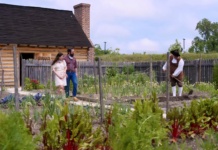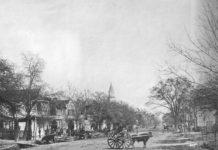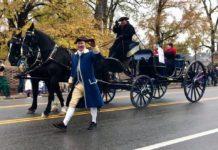The story of Jamestown, Virginia, is a tale of ambition, struggle, and resilience, marking a pivotal chapter in the history of the United States. Situated along the banks of the James River, Jamestown was the first permanent English settlement in North America. Here’s how its story unfolded:
The Founding:
In 1607, a group of 104 English settlers, sponsored by the Virginia Company of London, set sail from England seeking wealth and opportunity in the New World. On May 14, they landed on the shores of Virginia and established Jamestown. Led by Captain John Smith, they encountered numerous challenges, including conflicts with indigenous Powhatan tribes, disease, and food shortages.
Starving Time:
Jamestown faced a brutal period known as the “Starving Time” during the winter of 1609-1610. The settlers endured famine, disease, and attacks from the Powhatan Confederacy. By the spring of 1610, only 60 settlers remained alive.
Pocahontas and the Powhatan Confederacy:
Pocahontas, the daughter of Chief Powhatan, played a significant role in Jamestown’s history. She formed a bond with John Smith and helped negotiate food and peace with her father’s tribe. Pocahontas later married Englishman John Rolfe, which helped stabilize relations between the settlers and the Powhatan Confederacy for a time.
Tobacco Economy:
Jamestown’s fortunes changed with the introduction of tobacco cultivation by John Rolfe in 1612. Tobacco became a profitable cash crop, leading to the growth of plantations and the arrival of more settlers. However, this expansion came at the expense of Native American lands and increased tensions with the indigenous peoples.
Representative Government:
In 1619, Jamestown established the General Assembly, the first representative legislative body in English America. This marked an early step towards democratic governance in the New World, laying the foundation for the principles of self-government that would later shape the United States.
Challenges and Continuity:
Jamestown continued to face challenges, including conflicts with Native Americans, disease outbreaks, and economic struggles. However, it persisted as a colonial outpost, serving as the capital of the Virginia Colony until 1699 when the capital was relocated to Williamsburg.
Legacy:
Despite its hardships, Jamestown’s legacy endures as a symbol of America’s colonial beginnings. It represents the perseverance and resilience of early settlers, the complex interactions between Europeans and Native Americans, and the seeds of democratic governance planted in the New World.
Today, Jamestown is a National Historic Site, preserving its rich history for future generations to explore and learn from. It stands as a reminder of the enduring spirit of exploration and settlement that shaped the United States.


























